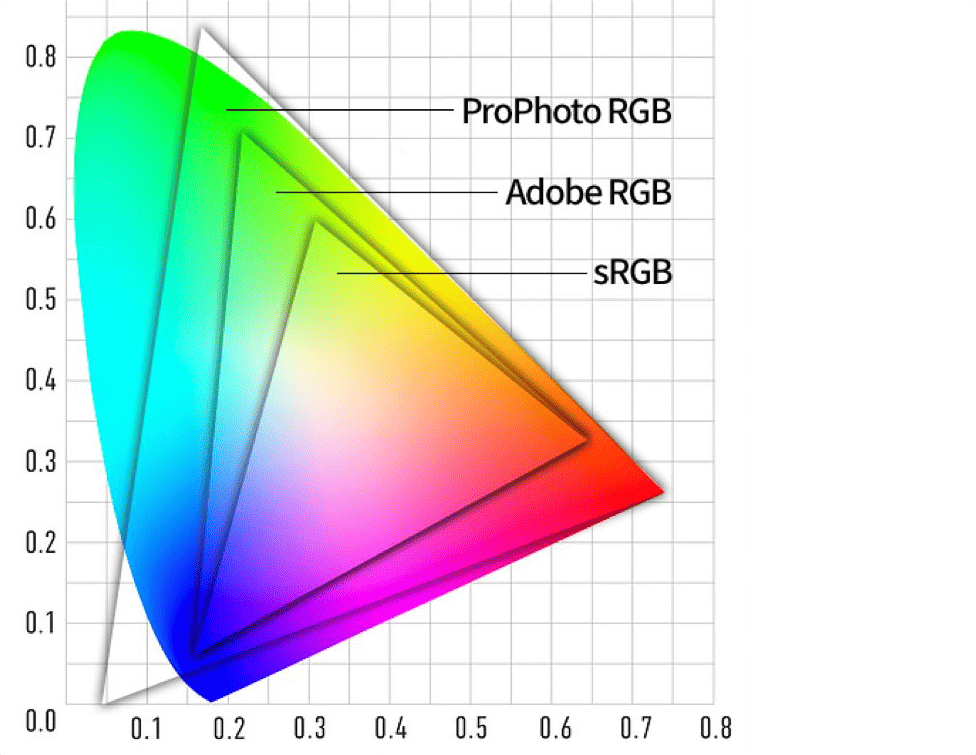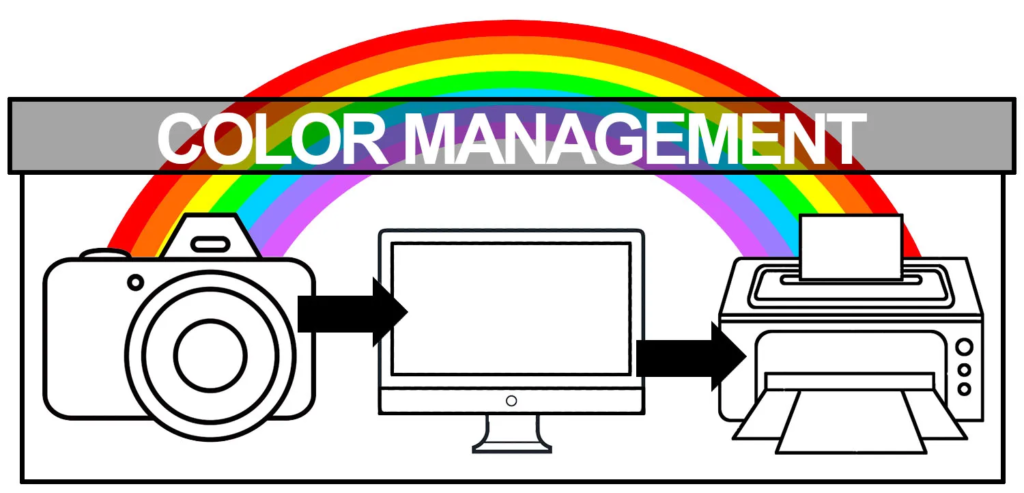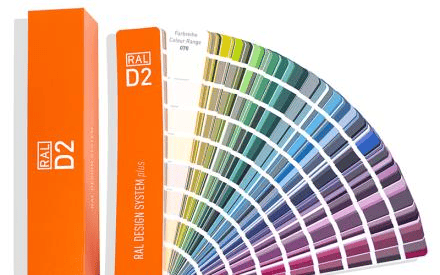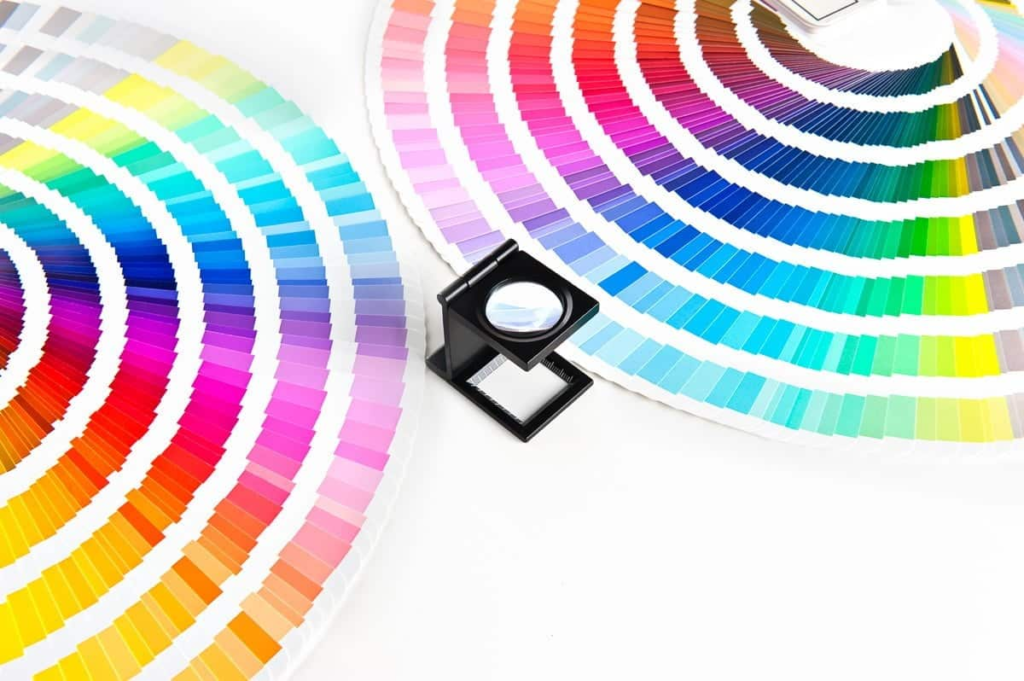Last Updated on June 26, 2023 by Packoi Team
The significance of effective color management cannot be overstated. Maintaining color accuracy is essential in today’s visually-driven world, where images and designs are ubiquitous across digital platforms, print media, and advertising campaigns. It ensures that you convey the intended message and establish a strong visual identity. Consistency in color reproduction is especially critical for photography, printing, advertising, and graphic design. This is where accurate color representation directly impacts customer perception, brand recognition, and overall quality.
Color Management
Color management controls and maintains consistent and accurate colors in the workflow while capturing, editing, displaying, and reproducing visual content. Therefore, it involves using color management systems and tools to ensure that colors appear as desired across different platforms.
Color management is hinged on the concept of color spaces and profiles. A color space defines the range of colors to be reproduced or displayed by a particular device or medium. The common color spaces include sRGB, Adobe RGB, and ProPhoto RGB. Each color space has a specific gamut representing the range of reproducible colors. On the other hand, a color profile is a mathematical representation of specific color characteristics. It offers instructions on how to interpret and convert colors between color spaces.

Color Management System
Another crucial aspect to understand is the color management system (CMS). This is a software-based solution that facilitates accurate translation and reproduction of colors across different devices. There are numerous components available in a CMS, which are outlined below:
Color Profiles
These are specific profiles created for each device involved in the color management workflow. A color profile describes the device’s color characteristics, including its color range and color rendering capabilities. With color profiles, the color management system ensures consistent and accurate color reproduction.
Calibration Tools
Calibration tools adjust and align the color output of devices like monitors and printers to conform to the defined standard. The process involves measuring and adjusting color settings for accurate and consistent color reproduction.
Rendering Intents
Rendering intents is another important element of the color management system. It defines how colors are mapped and reproduced between different color spaces. The four common rendering intents are perceptual, saturation, relative colorimetric, and absolute colorimetric. Each offers a different approach to preserving color accuracy and consistency.

Benefits of Accurate Color Management
There are several benefits when accurate color management is undertaken in a workflow.
- Consistent Color Quality: Implementing color management practices ensure that colors appear consistent across platforms. Consistency enhances the quality and visual experience, leading to better customer satisfaction.
- Brand Representation: Color is crucial in establishing brand identity. Accurate color management maintains consistent brand colors across diverse marketing materials, ensuring the brand is represented accurately in different channels.
- Efficient Workflow: Color management streamlines the production process. This is achieved by minimizing color discrepancies and eliminating the need for manual adjustments. With consistent color reproduction, businesses save time, reduce errors, and make workflows efficient.
- Cost Savings: Accurate color management helps you avoid costly reprints or reworks from inconsistent or inaccurate color reproduction. Minimizing color-related errors and maintaining color consistency leads to significant cost savings.
From the foregoing discussion, we can argue that color management is essential for maintaining accurate and consistent colors in content creation. Employing color management systems and adhering to best practices helps achieve consistent color quality. It helps to represent the brand accurately, streamline workflows, and minimize costs.

The Color Management Workflow
Following a systematic workflow is crucial to managing colors effectively and achieving the right and consistent color reproduction. The steps below will help you create a proper workflow to manage color reproduction.
Step 1: Establishing the Proper Color Settings
The first step is to establish the proper color settings across all devices. Ensure that the software used in the workflow has accurate settings. This includes setting the appropriate color space and color profile for monitors, cameras, and printers.
- Color Space: In this aspect, choose the appropriate color space that suits the specific needs. The most common color spaces include sRGB, Adobe RGB, and ProPhoto RGB. The choice of color space depends on numerous factors. Some of the factors include the output medium, the colors needed, and the device’s capabilities.
- Color Profile: With this aspect, each device in the workflow should have a specific color profile. The color profile describes the device’s color characteristics. It ensures accurate color reproduction in the workflow. Always utilize calibration tools to obtain accurate color profiles for the devices.
Step 2: Calibration and Profiling
Calibration and profiling are essential in ensuring accurate color reproduction. The step involves adjusting and aligning devices to conform to a defined standard.

- Monitor Calibration: In this aspect, utilize a color calibration device, such as a colorimeter or spectrophotometer, to calibrate your monitor. The calibration process adjusts the monitor’s color settings for accurate color representation. It also corrects color shifts or discrepancies.
- Printer Calibration: Similarly, calibrate your printer using special calibration tools. The process ensures that consistent and accurate colors are produced during printing. This is vital for proper ink consumption and perfect results of the printed output.
- Device Profiling: You must create or obtain accurate color profiles for each device used. These profiles guide you in interpreting and converting colors between color spaces. So, apply an appropriate color profile for every device to achieve consistency and accuracy during reproduction.
Step 3: Print and Output Optimization
In this step, one must optimize the print and output settings to achieve the best results. This basically involves considering factors such as paper type, ink profiles, and rendering intents.
- Paper Selection: Choose the appropriate paper type that complements your desired output and enhances reproduction. It is important to note that different paper types have different color characteristics, requiring specific adjustments for optimal results.
- Ink Profiles: Always use accurate ink profiles specific to your printer. Ink profiles ensure that the printer accurately reproduces the intended colors and tones. It takes into account the characteristics of the ink set being used.
- Rendering Intents: With rendering intents, select the appropriate one when converting colors between spaces. The choice of rendering intent determines how colors are mapped and reproduced. It is vital to note that different intents prioritize various aspects of accurate colors and consistency. So, choose the one that suits your specific needs.
- Test Prints and Iteration: It is essential to create test prints and evaluate the results to fine-tune the color management settings. Ensure that you make adjustments and repeat the process until the desired color accuracy and consistency are achieved.

When you follow this color management workflow, you establish proper color settings and calibrate effectively for all devices. It also helps you to optimize your print and output settings. This systematic approach helps ensure the workflow’s right and consistent color reproduction. Eventually, it results in high-quality and visually appealing output.
Best Practices for Effective Color Management
As a business owner, you must ensure effective color management and consistency throughout the supply chain. Accurately communicating color values and using color proofs and samples are essential. Here is a list of the best practices to follow to make your color management effective.
Consistency Throughout the Supply Chain
You must follow the strategies below for proper digital color management in the supply chain. With these techniques, you will have effective printed color output and ensure that you keep your color data consistent across the workflow. It will also make the colors displayed ideal for your business.
- Define and document color standards: As the business owner, ensure that you establish clear color standards for your products. You must specify the color values, including Pantone, CMYK, RGB, or Lab values. After that, it is crucial to document the standards to ensure everyone involved can access them.
- Train suppliers and partners: It is also important to provide training and guidelines to your suppliers, manufacturers, and partners. The goal is to educate them on the importance of color consistency and effective ways to attain the results.
- Monitor and audit color consistency: Another important aspect is to monitor color accuracy at various stages regularly. As the business owner, perform audits and inspections to ensure final products match the color standards.

Communicating Color Values
In this aspect, you must communicate clearly to achieve color matching in your business. Color matching is important to guarantee consistency in ink mixing at all levels of the business. Here are some strategies to attain this.
- Use standardized color systems: Utilizing widely accepted color systems is crucial. These include Pantone or ICC profiles to communicate and specify color values. With this approach, you will ensure consistent interpretation across different devices and software.
- Provide detailed color information: When sharing color values, include all necessary information. In your outline, provide information about color space, color profile, rendering intent, and preferred printer profile. This helps to reproduce the intended colors accurately.
- Digital asset management: You must also use a centralized digital asset management system to store and share color profiles, color swatches, and other color information. The approach facilitates easy access and consistent usage across all levels.
Implementing Color Samples and Proofs
This is another important best practice to adapt to get a correct color profile. If you have specific brand colors, you must employ techniques that allow consistency and effectiveness.

- Request physical color samples: As the business owner, ask suppliers or manufacturers to provide physical samples of materials or products before mass production. This technique allows you to verify color accuracy, making necessary adjustments early.
- Use digital color proofs: Leveraging digital tools to create color proofs that simulate the final product’s appearance is also essential. This includes soft proofs or hard proofs. It is vital to review and approve the proofs before full production.
- Validate color accuracy: It is also important to utilize color measurement devices. These devices include spectrophotometers. They help to assess color accuracy objectively. After that, compare measured values against the established color standards to ensure compliance.
These best practices minimize color discrepancies, maintain consistency, and achieve accurate color reproduction. It is crucial to remember ongoing monitoring, communication, and collaboration are key to successful color management.
Conclusion
From the foregoing discussion, having a proper system to manage colors is vital to achieving the best results. It is always vital to have proper setting standards that can be employed across different levels of the supply chain. It will ensure that each file is quality reproduced and matches the desired color output.
Get Reliable Printing Services
Looking for reliable printing services? Look no further. At Packoi, we are committed to offering customers a range of options that makes them achieve the desired results. Check out our design services or learn more about our company here. You can always trust us with any printing project, including packages and marketing materials. You can also talk to us about anything regarding printing, package design, and other branding needs for your business.





